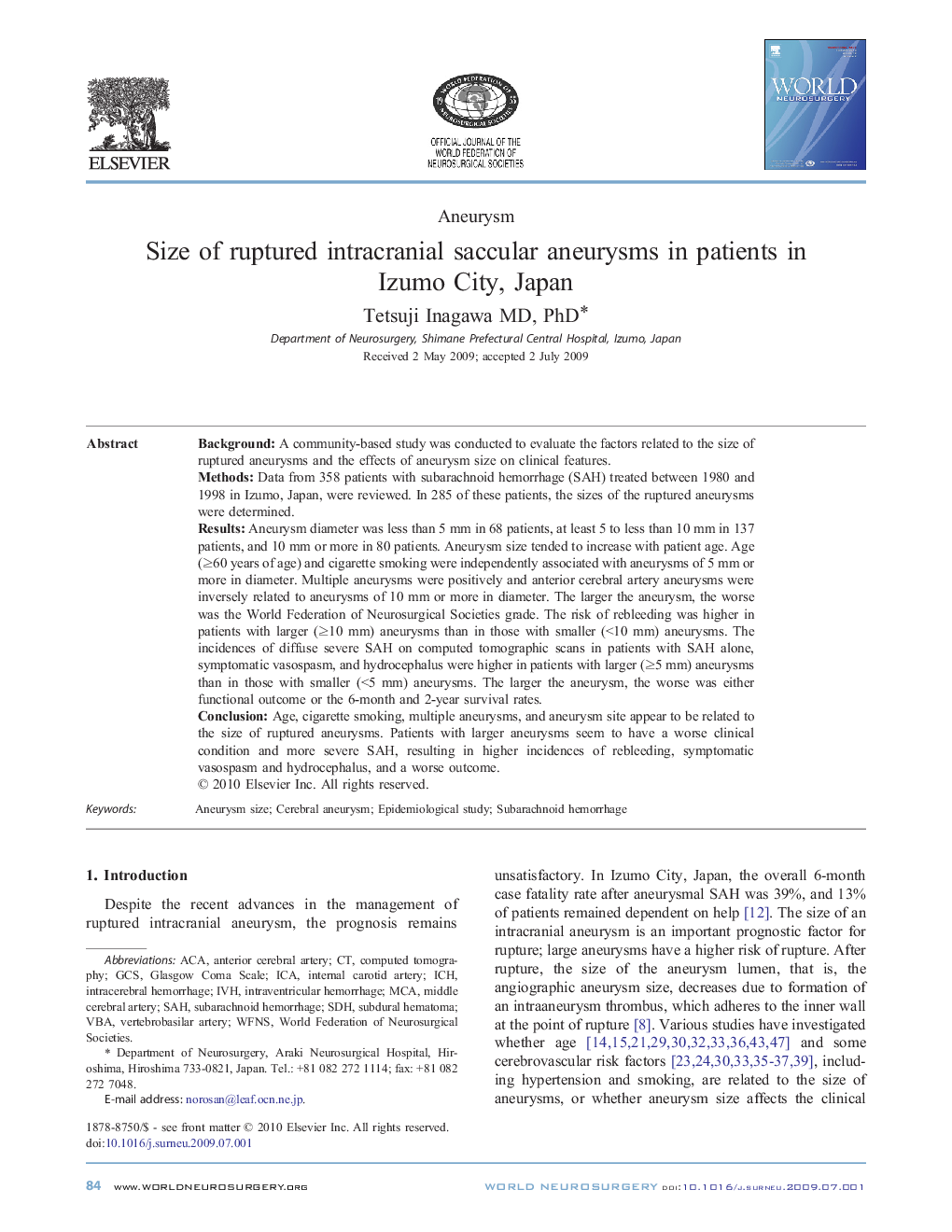| کد مقاله | کد نشریه | سال انتشار | مقاله انگلیسی | نسخه تمام متن |
|---|---|---|---|---|
| 3096219 | 1190923 | 2010 | 9 صفحه PDF | دانلود رایگان |

BackgroundA community-based study was conducted to evaluate the factors related to the size of ruptured aneurysms and the effects of aneurysm size on clinical features.MethodsData from 358 patients with subarachnoid hemorrhage (SAH) treated between 1980 and 1998 in Izumo, Japan, were reviewed. In 285 of these patients, the sizes of the ruptured aneurysms were determined.ResultsAneurysm diameter was less than 5 mm in 68 patients, at least 5 to less than 10 mm in 137 patients, and 10 mm or more in 80 patients. Aneurysm size tended to increase with patient age. Age (≥60 years of age) and cigarette smoking were independently associated with aneurysms of 5 mm or more in diameter. Multiple aneurysms were positively and anterior cerebral artery aneurysms were inversely related to aneurysms of 10 mm or more in diameter. The larger the aneurysm, the worse was the World Federation of Neurosurgical Societies grade. The risk of rebleeding was higher in patients with larger (≥10 mm) aneurysms than in those with smaller (<10 mm) aneurysms. The incidences of diffuse severe SAH on computed tomographic scans in patients with SAH alone, symptomatic vasospasm, and hydrocephalus were higher in patients with larger (≥5 mm) aneurysms than in those with smaller (<5 mm) aneurysms. The larger the aneurysm, the worse was either functional outcome or the 6-month and 2-year survival rates.ConclusionAge, cigarette smoking, multiple aneurysms, and aneurysm site appear to be related to the size of ruptured aneurysms. Patients with larger aneurysms seem to have a worse clinical condition and more severe SAH, resulting in higher incidences of rebleeding, symptomatic vasospasm and hydrocephalus, and a worse outcome.
Journal: World Neurosurgery - Volume 73, Issue 2, February 2010, Pages 84–92